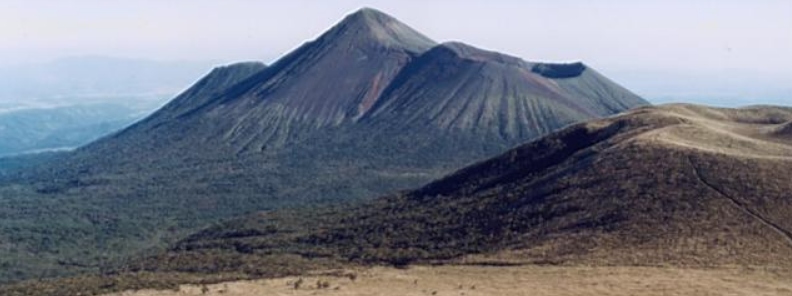JMA raises alert level for Kirishimayama (Shinmoedake) volcano, Japan

The Japan Meteorological Agency (JMA) raised the Volcanic Alert Level for Kirishimayama (Shinmoedake) volcano, Kyushu, Japan to Level 2 at 05:10 JST on November 18, 2019 (20:10 UTC, November 17).
JMA is urging residents and tourists to refrain from approaching the crater.
The decision to raise the alert was made amid increasing seismic activity in the area.
According to the agency, seismic network monitoring the volcano detected 22 earthquakes directly beneath the crater between 12:00 JST on November 17 and 05:00 JST, November 18.
The eruption could eject volcanic material 2 km (1.2 miles) from the crater and produce pyroclastic flows within 1 km (0.6 miles) from the crater.
The last eruption of this volcano took place on June 22, 2018, ejecting ash up to 4.6 km (14 000 feet) above sea level.

The June 2018 eruption was the first explosive eruption of this volcano since 05:44 UTC on May 14, 2019. That eruption sent ash up to 7.6 km (25 000 feet) above sea level, making it nearly 1 km higher than the April 4th eruption and the highest since the eruptive phase began on March 1, 2018.


Geological summary
Kirishimayama is a large group of more than 20 Quaternary volcanoes located north of Kagoshima Bay. The late-Pleistocene to Holocene dominantly andesitic group consists of stratovolcanoes, pyroclastic cones, maars, and underlying shield volcanoes located over an area of 20 x 30 km (12.4 – 18.6 miles).
The larger stratovolcanoes are scattered throughout the field, with the centrally located, 1700-m-high (5 577 feet) Karakunidake being the highest.
Onamiike and Miike, the two largest maars, are located SW of Karakunidake and at its far eastern end, respectively.
Holocene eruptions have been concentrated along an E-W line of vents from Miike to Ohachi, and at Shinmoedake to the NE. Frequent small-to-moderate explosive eruptions have been recorded since the 8th century. (GVP)
Featured image credit: Ichio Moriya/Kanazawa University

Commenting rules and guidelines
We value the thoughts and opinions of our readers and welcome healthy discussions on our website. In order to maintain a respectful and positive community, we ask that all commenters follow these rules:
We reserve the right to remove any comments that violate these rules. By commenting on our website, you agree to abide by these guidelines. Thank you for helping to create a positive and welcoming environment for all.